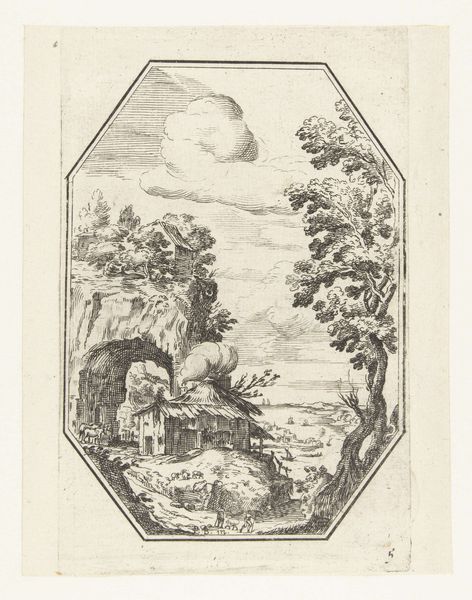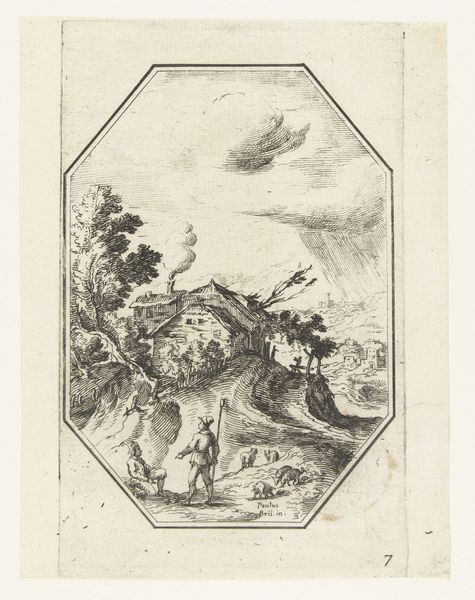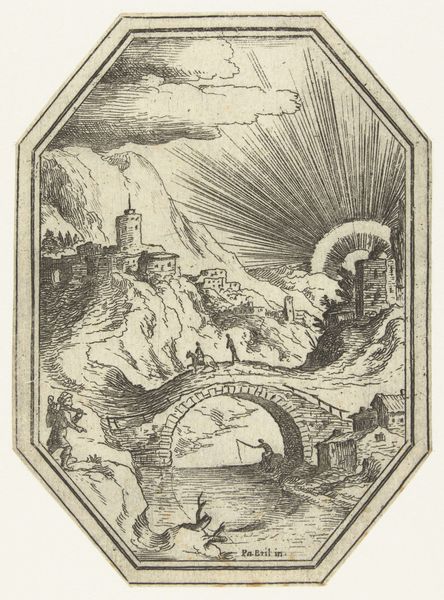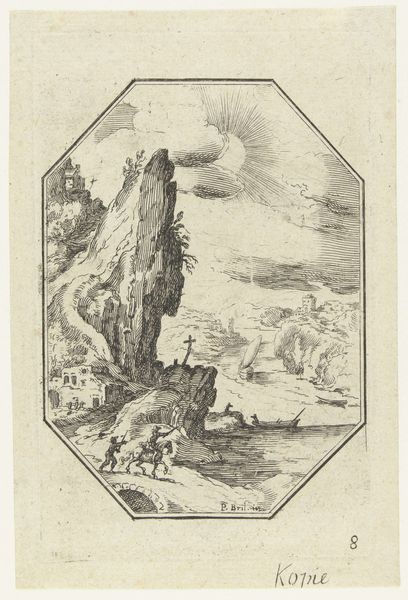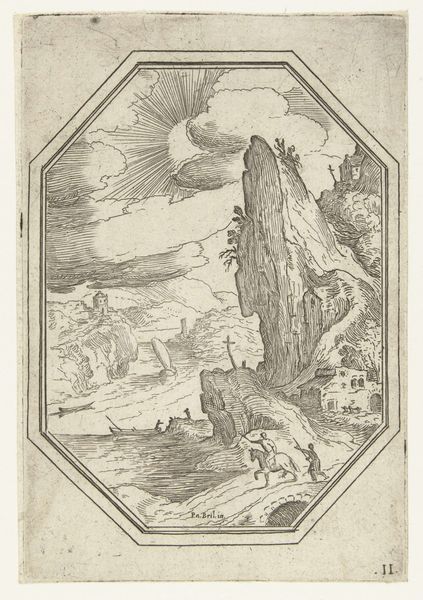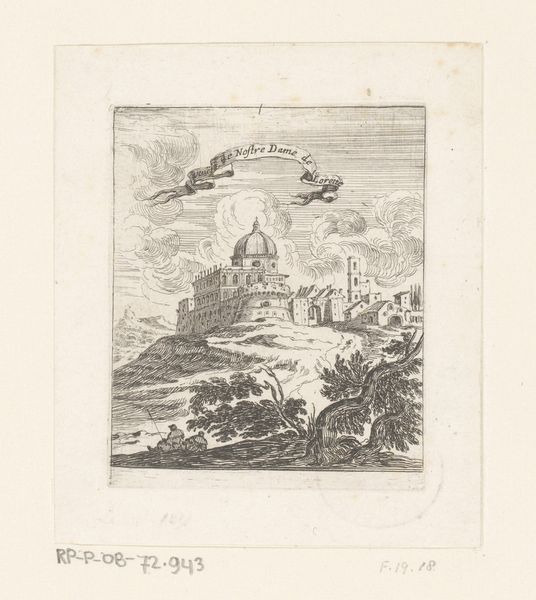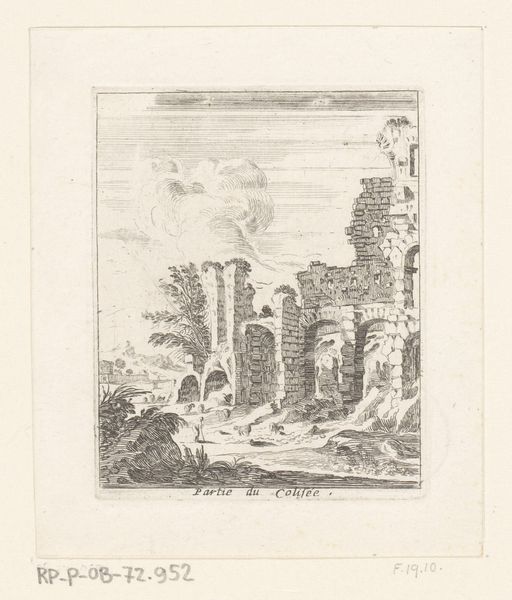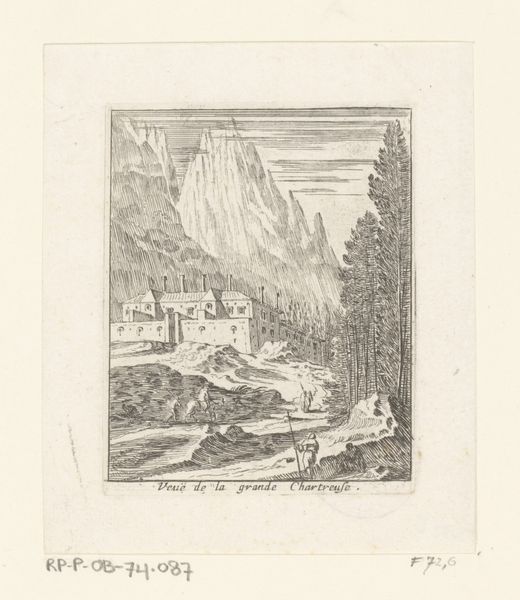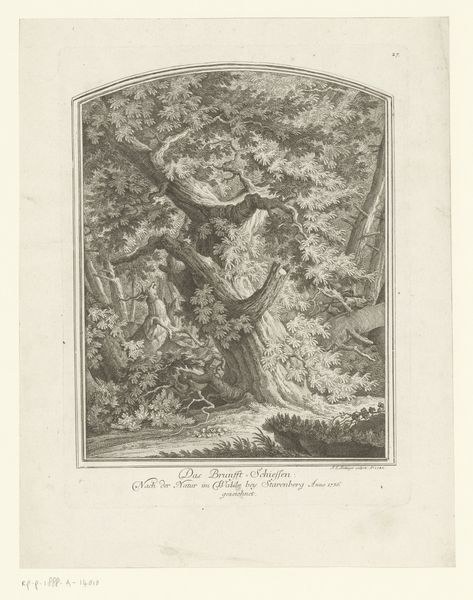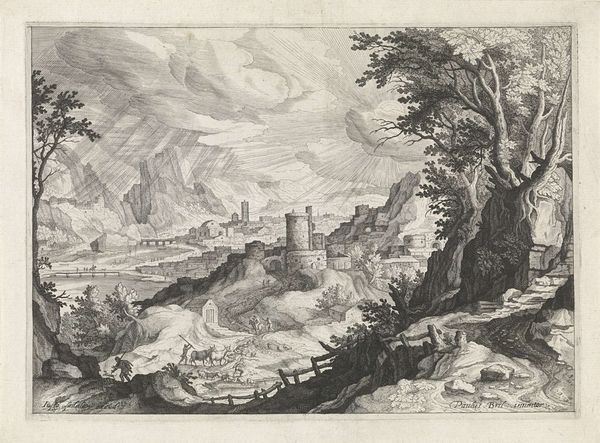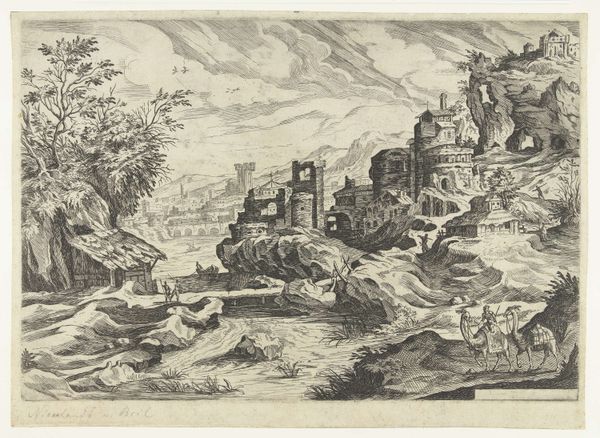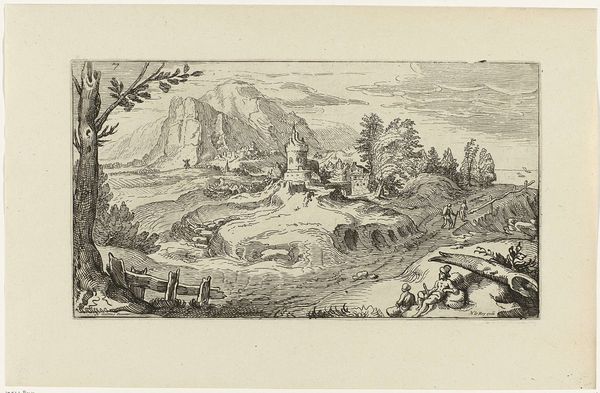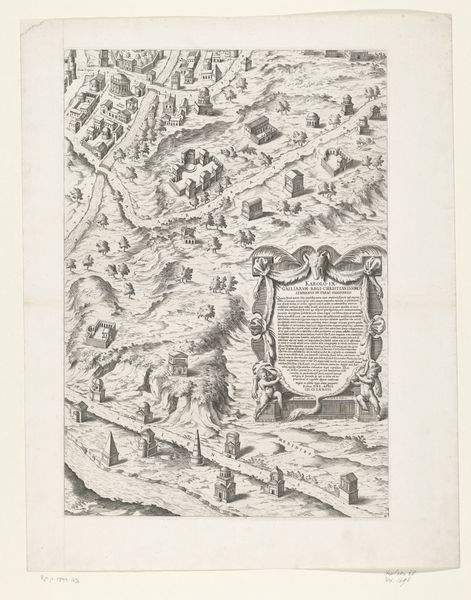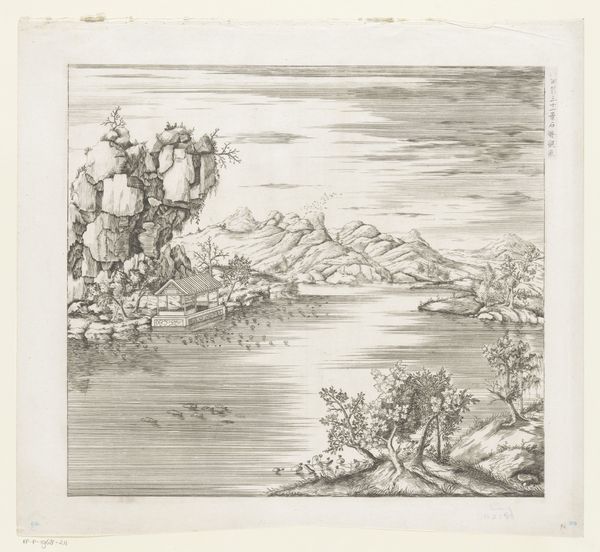
print, engraving
#
baroque
# print
#
old engraving style
#
landscape
#
geometric
#
engraving
Dimensions: height 138 mm, width 88 mm
Copyright: Rijks Museum: Open Domain
This is an undated landscape with a stone bridge set in an octagonal frame, made by an anonymous artist using etching. The process of etching involves coating a metal plate with a waxy, acid-resistant substance. The artist then scratches an image into this coating, exposing the metal. When the plate is dipped in acid, the exposed lines are eaten away, creating grooves. These grooves hold ink, which is then transferred to paper under pressure. The fine, precise lines, made possible by the etching process, define the artwork and allow for the depiction of intricate details, such as the rocky textures of the landscape. Note how the light effects, created by varying the density and direction of the lines, evoke a sense of depth. The process is labor intensive and demanding, but the final print gives the impression of ease. Consider the relationship between the artisan's hand, the mechanical reproduction of the print, and the wider distribution of images and ideas that this artwork made possible. Appreciating the materiality and techniques employed in its making allows us to think of the work as part of a broader history of artistic production.
Comments
No comments
Be the first to comment and join the conversation on the ultimate creative platform.
